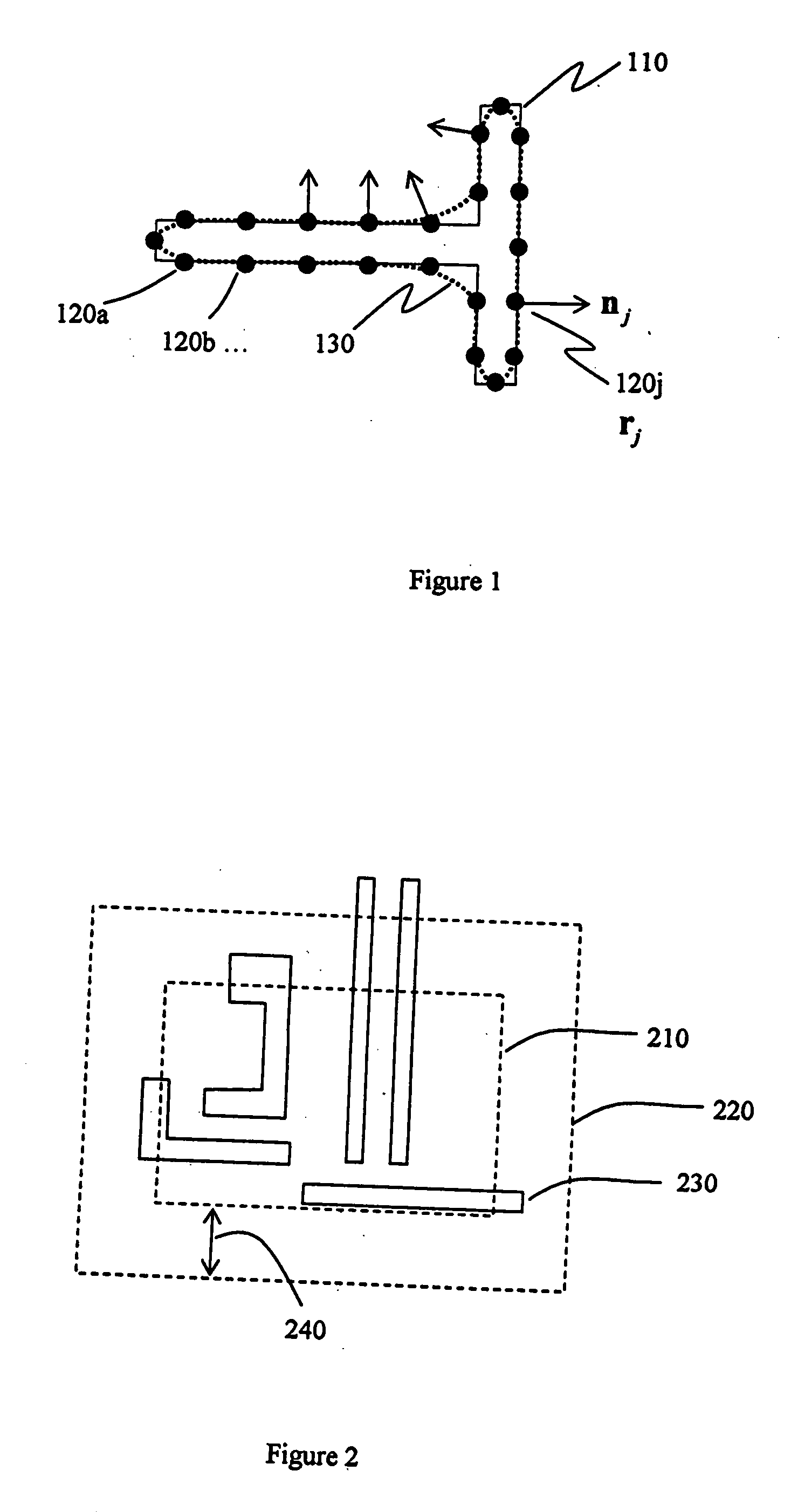Method for checking printability of a lithography target
a lithography target and printability technology, applied in the field of integrated circuit fabrication, can solve the problems of increasing the chip size and the process can waste precious design tim
- Summary
- Abstract
- Description
- Claims
- Application Information
AI Technical Summary
Benefits of technology
Problems solved by technology
Method used
Image
Examples
Embodiment Construction
[0024] The terms “karo”, “target points,” and “normal vectors” are used in the description, and will first be defined.
[0025] Techniques hereof check a small region of the target layer at a time. This region is called a karo. The union of karos cover the chip, or the part of the layout to be checked. Karos may overlap. Karos are rectangular in a preferred embodiment, although in alternative embodiments they can have any shape. The preferred size of a karo is between 0.5 and 2 micrometers for 193 nm exposure wavelength.
[0026] In a given karo, target points r1,r2, . . . , rM are selected on the edges of target polygons. The target points are used to help encapsulate the design requirements by a mathematical expression. In an embodiment hereof, target points on a polygon are approximately equally spaced by a distance of (kSAMPLE λ / NA), where kSAMPLE is a dimensionless factor that is less than 0.25 and preferably larger than 0.1; λ is the exposure wavelength, and NA is the numerical ap...
PUM
 Login to View More
Login to View More Abstract
Description
Claims
Application Information
 Login to View More
Login to View More - R&D
- Intellectual Property
- Life Sciences
- Materials
- Tech Scout
- Unparalleled Data Quality
- Higher Quality Content
- 60% Fewer Hallucinations
Browse by: Latest US Patents, China's latest patents, Technical Efficacy Thesaurus, Application Domain, Technology Topic, Popular Technical Reports.
© 2025 PatSnap. All rights reserved.Legal|Privacy policy|Modern Slavery Act Transparency Statement|Sitemap|About US| Contact US: help@patsnap.com



